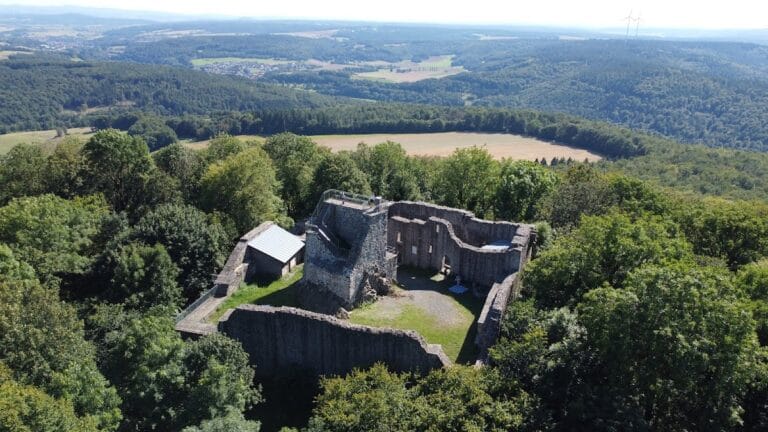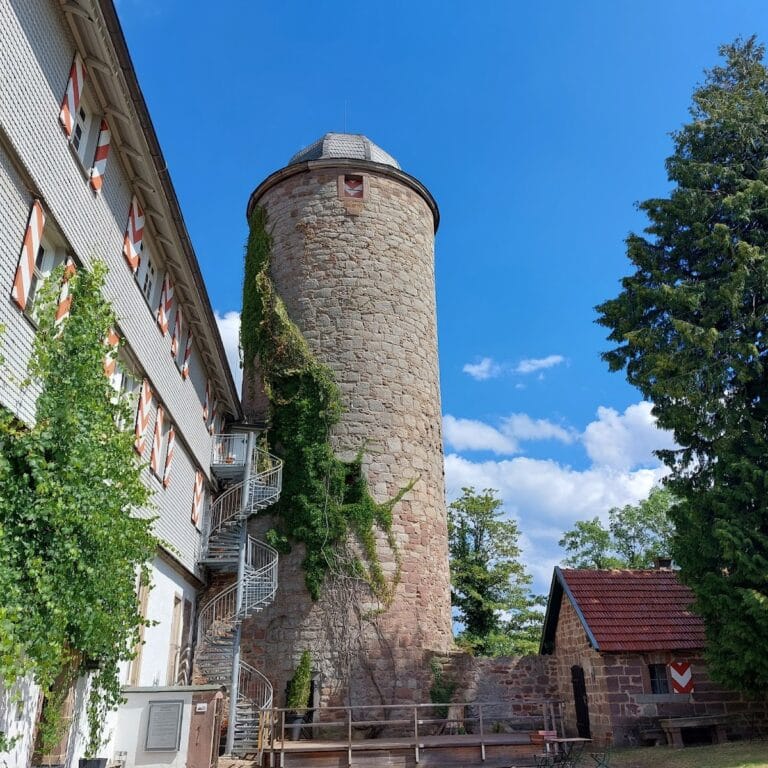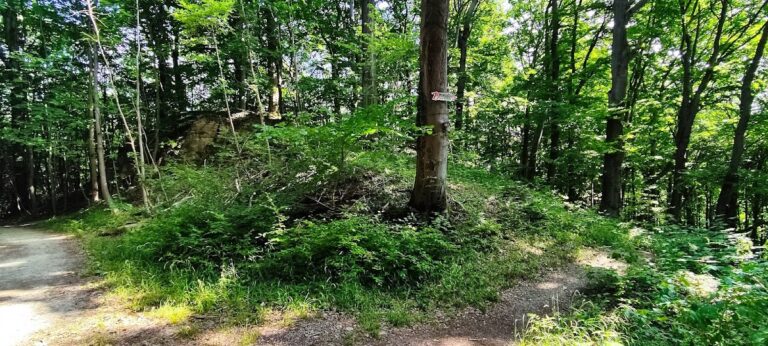Burg Herzberg: A Medieval Castle in Hesse, Germany
Visitor Information
Google Rating: 4.5
Popularity: Medium
Google Maps: View on Google Maps
Official Website: www.burg-herzberg.de
Country: Germany
Civilization: Medieval European
Remains: Military
History
Burg Herzberg is a medieval castle situated in the municipality of Breitenbach am Herzberg, Germany. Constructed by German builders in the late 13th century, it occupies a commanding position in the Hessian landscape, reflecting the strategic needs of its era.
The initial phase of Burg Herzberg began around 1280 under Heinrich von Romrod, who served as marshal to Landgrave Heinrich I of Hesse. Granted five villages near Herzberg as a fief, Heinrich established the castle on a hill then known as Herzisberg, later renamed Hirschberg. By 1298, the castle was likely finished, as records indicate Heinrich transferred it as a fief to the Landgrave of Hesse. This early period marked the castle’s role as a military and administrative seat tied to regional noble authority.
Following the extinction of the von Romrod male lineage in 1344, ownership passed through marriage to Berthold von Lißberg. Around 1370, Burg Herzberg featured prominently in the Sternerkrieg, or Star League War, a conflict pitting the Sterner faction against the Landgraves of Hesse. The castle acted as a fortress supporting the Sterner side. In 1372, Landgrave Hermann II laid siege upon the castle with roughly 1,000 men. Despite this, the castle held firm, aided by about 1,500 Sterner reinforcements, underscoring its defensive strength in regional warfare.
Throughout the late 14th and 15th centuries, the castle’s ownership shifted with shares passing to the Falkenberg family before coming under the Freiherren von Dörnberg by 1477. Under Hans von Dörnberg’s patronage between 1480 and 1497, the castle underwent significant expansion and fortification, transforming it from a medieval residence into a more formidable fortress suited to emerging military technologies and threats.
Burg Herzberg saw repeated military engagement during the Thirty Years’ War from 1618 to 1648. Though attacked multiple times—in 1631, 1635, 1637, and 1641—it remained unconquered, demonstrating both its robust fortifications and strategic importance. Later, during the Seven Years’ War (1762–1763), French troops commanded by Marshal Jacques Philippe de Choiseul-Stainville occupied the fortress, indicating its continued military relevance well into the 18th century. This role lasted until 1786, when the final Hessian garrison withdrew, ending its active defensive use.
Since 1953, the hill on which Burg Herzberg stands, together with the surrounding environment, has been protected as a designated landscape area, acknowledging both its historical and natural significance.
Remains
Burg Herzberg stands as the largest hilltop castle in the German state of Hesse, perched at 506 meters above sea level on the Hirschberg. Its layout centers on a trapezoidal inner bailey (or courtyard) known as the Mittelburg, with the narrow end oriented to the north. This core area housed key structures, including a Romanesque-style castle chapel originally built to serve as a fortified church. The chapel was adapted in 1790 to include new window openings, reflecting changes in use and architectural style.
Next to the chapel lie the remnants of the old bergfried, the main defensive tower typical of medieval castles. The residential quarters of the castle’s lords once stood here as well, although they were demolished in 1700. Parts of their subterranean cellar walls remain visible today, offering insight into the castle’s domestic spaces. Surrounding the inner bailey were five round towers, strategically placed to maximize defensive capability. On the southern side, three such towers included a gate tower—the central among them functioned as a combined court and prison. The tower to the right served as a residence, while the left contained a knights’ hall established in 1565.
On the northern flank, two additional round towers stood, likely without roofs. These towers were adapted for artillery defense; the right northern tower served as a powder magazine for gunpowder storage. The left northern tower, known as the Huhnstädter Tower, connected via an underground passage to the nearby Huhnstadt estate. The origin and specific purpose of this subterranean link remain unknown but reveal a complex relationship between the castle and its surrounding lands.
Attached to the southern side of the inner bailey is the outer bailey (Vorburg), originally accessed through a drawbridge and a double gate, flanked by defensive walls with walkways suitable for patrol and defense. The drawbridge was removed in 1788, and the surrounding moat was filled in afterward. Within the outer bailey, a rectangular commandant’s tower was positioned to the left of the entrance gate, providing control over the adjoining left zwinger, or outer ward. Opposite this tower, a rectangular battery platform once held cannons, signaling adaptations to gunpowder warfare.
Additional facilities within the outer bailey included cisterns for water storage, armories for weapons, and magazines for provisions and munitions, reflecting the castle’s preparedness for extended sieges. The approach roads to the fortress were further secured with two bastion-like earthworks equipped with cannons, defending the site from advancing forces and underscoring its role as a strong military position.
These surviving elements of Burg Herzberg illustrate its evolution from a medieval noble residence to a fortified complex adapted for early modern warfare, retaining a layered architectural record of its long history.










